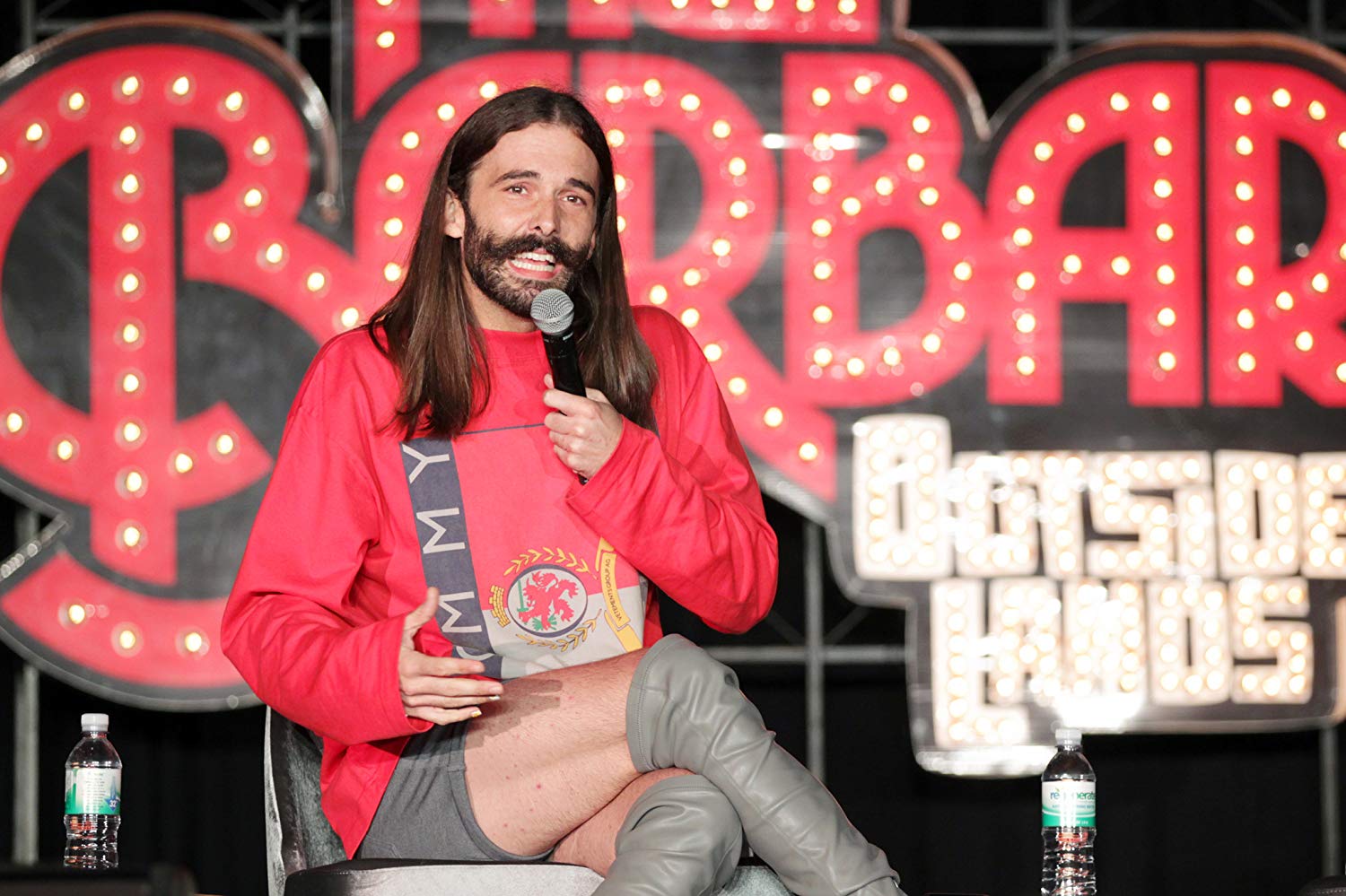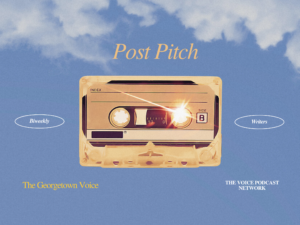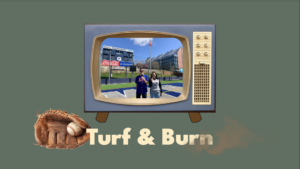Jonathan Van Ness strides onto the stage in high-heeled boots, his long hair flowing and his ultra-stylish outfit perfectly accentuating his form. He takes a seat and greets the audience, waving frantically and beaming from ear to ear. He says, “Welcome to Getting Curious. I’m Jonathan Van Ness, and every week I sit down for a 30-minute conversation with a brilliant expert to learn all about something that makes me curious…”
At least, that’s what I imagine happens. Of course, I can’t actually see any of this because Getting Curious is a podcast, but Van Ness is so good at creating an image in the minds of his listeners that it feels as though I’m just another member of the live audience.
Jonathan Van Ness is one of the men from the show Queer Eye, a Netflix revival of a classic makeover show in which a group of gay men gives a struggling guy some style and life advice in an effort to promote his confidence and happiness with his overall appearance. I was first introduced to Van Ness on this show, which I binge-watched in a single weekend. Classic catchphrases like “yass honey,” and “I love that story” are also used frequently in his podcast. “Strugs to func” (aka struggling to function) is a personal favorite of mine.
Getting Curious comes out on Earwolf, a comedy podcasting network, every Wednesday. I began listening at the start of the semester, squeezing in an episode on the 30-minute walk to school each morning or while getting dressed for the day.
Van Ness’s distinct personality is incredibly amusing—he’s very flamboyant and expressive, relentlessly positive even on bad days. He never seems afraid to be himself and to be an icon, especially for his community. He’s very good at hyping up guests, and it’s clear that he does a lot of background research before each interview. He’s self-deprecating in a charming way, but he’s also fearlessly confident.
You’ll reliably learn a ton while listening to each episode, but it’s great because you often don’t realize that you’re learning at all—it’s all packaged in a very accessible format with a host who makes sure his guests break down all the details from start to finish. The guests he interviews span fields such as neuroscience, political science, linguistics, and music.
Van Ness is a great interviewer because he’s not afraid to ask the basic questions. He makes sure that he has a substantial conversation with every guest, getting to a place of vulnerability, honesty, and sometimes even genuine emotion. But, at the same time, no question is considered too stupid or simple to ask, so he inherently makes the listener feel comfortable for wondering the same thing. He does a good job being an ally, asking people about their identities and trying not to assume anything, while honestly admitting when he does misstep.
Episodes often meander into personal stories and semi-irrelevant, but always entertaining, tangents. Most of these are attempts to create analogies to make the information being conveyed more accessible. Each episode has a framing question that he and his guest explore. The question explored in last week’s episode was “What can allies do to defend trans rights?”
In this special bonus episode, Van Ness interviewed Mara Keisling, the founder and executive director of the National Center for Transgender Equality (NCTE). This episode comes in the wake of the Trump administration’s leaked memo stating that it is considering ways to erase transgender as a legal category and deny trans people basic legal protections. It was recorded live at the Bentzen Ball in Washington, D.C., which added a very cool atmosphere as you could hear everyone clapping and screaming in the background. On regular episodes, the host and guest have a conversation in a recording studio or sometimes over the phone.
Mara Keisling was born in 1959. She came out to her parents when she was three years old by putting on her sister’s Girl Scout uniform and telling them she was a girl. They said that was impossible, that she was a boy and would always be a boy. From that experience, she learned that she couldn’t tell anyone about her true identity, so she didn’t until she was in her 30s.
Growing up in the 60s and 70s, she says she felt like the only trans person in the world, isolated in the pre-Internet age. But with the advent of the web, trans people could better form communities and build political power. There were already activists in big cities at the time, but those who came together agreed they needed a voice in Washington, D.C. So, at the turn of the century, they founded the NCTE.
The initial purpose of the center was to get the LGBT community (at the time referred to as the Gay Rights movement) to “more responsibly represent trans people,” and to “get the federal legislation that was meant to protect people based on their sexual orientation to also protect people based on gender identity and expression.” In those pursuits, she said, they were quickly and wildly successful, despite the fact that trans people were considered political pariahs during the Bush era.
Since then, trans people seem to have come a long way. For instance, Christine Hallquist, a transgender woman, won the 2018 Democratic nomination for governor of Vermont, but wound up conceding to her opponent on election night.
Van Ness then moved the conversation to the difference between trans activism pre- and post-Trump. Keisling stated that Republicans have let Trump take the swinging pendulum of politics—from conservatism to liberalism—and “turn it into a wrecking ball.”
After the events of this week, and the past months of this administration, trans people are scared and angry: “They’ve been attacking transgender children, they’ve been attacking transgender service members, and they have stopped enforcing federal civil rights laws that protect us,” Keisling said.
The implications of the administration’s statement are as yet unclear, which has stoked even more fear and uncertainty.
“The last few weeks have been very, very hard for almost every transgender person I know […]. But what I have been so amazed and proud about is how everybody has just said—I’m trying not to swear—everybody has just said ‘we’re gonna fight this,’” said Kiesling.
Being trans is a struggle, Keisling said, and a test of resiliency, “so if you know trans people, please, love them and let them know that you care.”
Many Getting Curious episodes are action-oriented, providing listeners with an outlet through which to channel their anger and passion or a way to support each guest. In this case, Keisling encourages people to vote, join the NCTE at protest rallies, and visit transequality.org to learn more. He also prompted Keisling to shine a spotlight on other trans rights organizations in D.C. such as Casa Ruby, the Sexual Minority Youth Action League, and The Wanda Alston House, a homeless center for queer folks.
In this episode, Keisling was very much the straight man (ha ha, the irony) to Van Ness’s goofier humor. Keisling had a surprisingly good sense of comedic timing, while still delivering a lot of valuable information to listeners. The thirty-ish minutes flew by, as always.
Van Ness has created and fostered a popular platform through which he can express his feelings about current issues, particularly political issues, to educate people and promote compassion. He has done issues about refugees, immigration, addiction, and suicide, among other intense and important topics. This podcast, accessible to all and listened to by thousands, is uniquely important, as it offers knowledge, entertainment, and an opportunity for informed activism in fraught political times. Listening to this podcast motivates me to learn new things and take action whenever possible, and maybe it’ll do the same for you.




